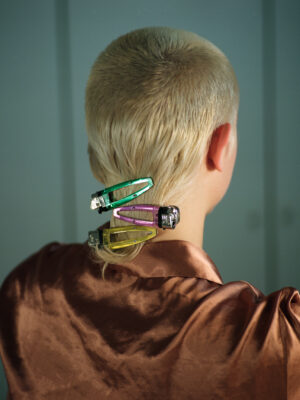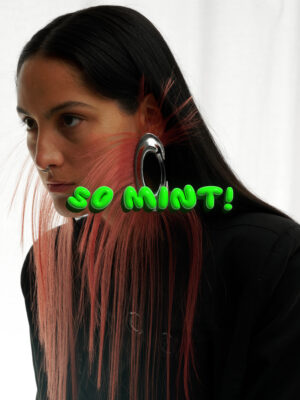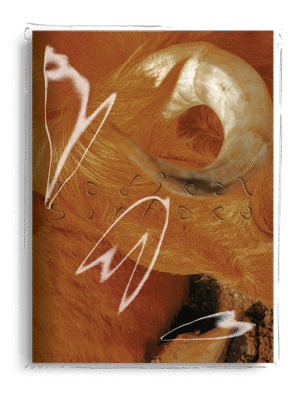JEWELLERY AS OBJECT (AS EPIPHANY)
Jewellery is a cultural artefact; it provides a testament to the long history of symbolism associated with adornment, talismans, and signifiers. Many artists create strong work that adds breadth to that history. It is the rare artists who are able to amalgamate their ideas with their relationship to jewellery and turn seemingly arbitrary materials into objects that act as course-altering epiphanies between culture, history and the new.
___STEADY_PAYWALL___
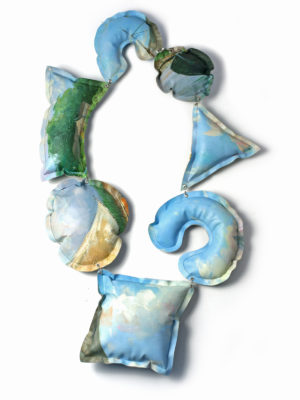
Lisa Walker studied Craft and Design in her native New Zealand before moving to Germany and studying with Otto Künzli at the Munich Academy. After fifteen years, Walker returned to New Zealand where she continues to be a prolific maker and voice in the contemporary jewellery field. She uses a wide array of materials and creates jewellery that bends notions of preciousness and symbolic representation.
Mariah Tuttle:
You have said, in both writing and previous interviews, that you’ve realized ‘this is it for life’. You’ve found a path, a way of working, and an interest that will keep you engaged indefinitely. It was such a huge shift from your traditional goldsmithing background. I am really interested in that shift – the moment you began making connections between your interests in these new materials with the internal questions you were/are having about jewellery.
Lisa Walker:
I was at the Arts Academy and had been studying jewellery for about six years. My pieces in metal were getting smaller and smaller and more detailed. At the side of my bench, I just started sticking some fabric and stuff on cardboard. I kept adding odd materials to the table and started buying and using the tools needed for these materials – like scissors and glue. There were times after the first explorations, when I really wanted to work in metal. My first reaction was, ‘Oh wow, so all this that I’ve been doing has actually been a way to go further in my metal work’. So, I spent a few weeks at my bench soldering and it was a bit of a struggle. One day, I just put the torch aside and went back to my other table and started focusing on the new materials. It took me about six months to realize some of these first pieces I was making were for my mother’s friends. There is an amazing culture of women who are really staunch, strong feminists here and it is a large part of my life in Wellington, really. And some of those new pieces were starting to reflect that part of me. In fact, Otto mentioned seeing a change in my work and that was the first time I could look at it and say those words.
To get to the understanding – to take it seriously – to realize my work had changed, that I wasn’t just working in metal anymore and was looking at different materials, was a process that took a while to accept. But once I did, I understood the new world I’d entered – the huge possibilities and the many lifetimes of research that this way of working would allow for and keep me interested in. To come to that moment, that realization was a big process; it still is.
It is a constant process. Epiphanies, of course, are not just about materials or objects. They are about ideas: things read, seen, heard. I go through lots of different things to get to a moment – but a moment comes all by itself. You can’t plan it. There are many, many, many, many examples of moments that seep into my work. They are all influences; it’s how the work exists.
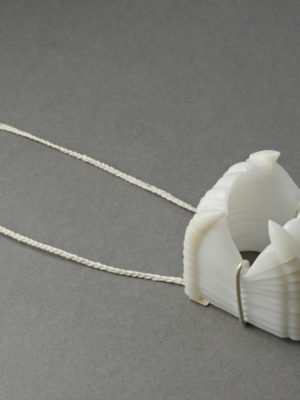
(NEW) MATERIALITY AS (THE NEW) TOTEM
MT:
You have a very renegade approach to your choice and use of materials and you create work that is both fresh and deeply rooted in contemporary jewellery. This ability is the foundation to the idea of creating an object as a new totem: a piece that can add to, while simultaneously break away from, history.
For example you have noted that, ‘One issue of (my) work is a study of the differences between an acceptable notion of beauty or stereo-type, and something else – the search for an aesthetic that we hardly ever see, but nevertheless perhaps recognize’.¹
So, let’s say you are wandering through a second-hand store – or somewhere – perusing materials. At some point, your internal aesthetic radar is peaked and something catches your attention, for whatever reason: colour, texture, size. Is there a separation between the initial reactions you have with materials – or are these moments so completely blended in with your constant thinking and awareness of jewellery that the material identification and resulting pieces you create become one long circling journey?
LW: My resonance and response to the materials that I find are, of course, connected to what I do and what I am interested in, and how eventually my pieces exist. But, I think that’s a really nice question. That’s what makes me a jeweller. My creativity – although I’ve struggled with that word because it can have such a hippie-hobby association to it — but still, it’s a word that makes sense to me, it is definitely all combined. They are all bound together; I would be very, very reluctant to separate them.
Jewellery is initially made, or least it is a strong factor, to make the wearer more beautiful. That is very much about the wearer: making something pretty, making something attractive, making something positive and gorgeous and beautiful. How do we translate that beauty expectation in jewellery and sort of twist it around into something different?
I’m always searching for this and it’s a wonderful search. I have no idea what it will bring. I don’t know what that object is until I make it. I can’t envision it beforehand, but it has to have those qualities.
Things are written that I’m so free: anything goes. She is so open. Everything can be jewellery. And I’m thinking, Yeah, actually no. That’s not the case at all. I’m selective. I’m incredibly selective. For a material to arrive on one of the shelves here… nothing enters my workshop – not even through the front door – without me sort of vetting it.
Sometimes I make something and look at it and ask where can I place this piece? But – what if I can’t place a piece anywhere? What if I can’t find a little recipe for myself that makes sense, which pulls it in as jewellery? What happens when I make a piece that is not in any kind of stereotype, but there is something about it that we sort of recognize? There is something that might gel in us in someway, or might make us a little bit more comfortable. Or, what happens when you feel uncomfortable? What happens when we look at something and think, holy shit what is going on here? I don’t recognize this. I don’t understand it. I don’t think I relate to it. But, there is something there that I know is good. There is something that I know is speaking to me.
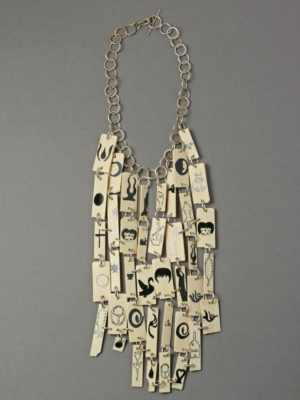
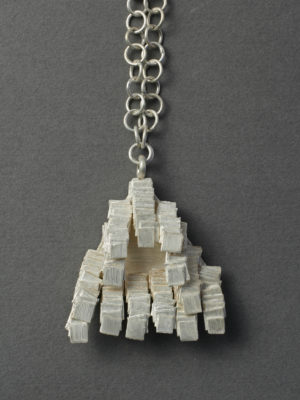
MT: The discomfort of acknowledging an object that is really close to what we know, but maybe haven’t deciphered yet, parallels an observation Kerianne Quick wrote in a review about one of your exhibitions a couple of years ago:
‘It is the physical manifestation of the mental and virtual baggage of living NOW. It is a stream of consciousness record of the whims and obsessions of an over media-filled, production inundated, anxious, global culture. Like if our collective subconscious brain could turn it’s pockets inside out, showing the world what we are really made of, it would look like Lisa’s work’.²
LW: I just love that; it’s totally chaotic. You read it and just start to feel claustrophobic. The feeling is both disturbing and yet familiar somehow – like those moments I look at something I do not recognize but know will influence future work.
JEWELLERY AS PHOTOGRAPH
When artists learn to employ the symbiotic relationship between jewellery and the photographs that interpret and redefine it, the image becomes cult paraphernalia. It turns the lens on the history and presentation of jewellery and creates something new that confronts and scrutinizes the social contexts of materiality, innuendo, media power, and everything in between. Instead of perpetuating the provided cultural fantasy, these artists broaden the discussion of what is in focus and what is in the periphery. They move beyond, while starkly commenting on, our own struggles with what we want and what we are fed.
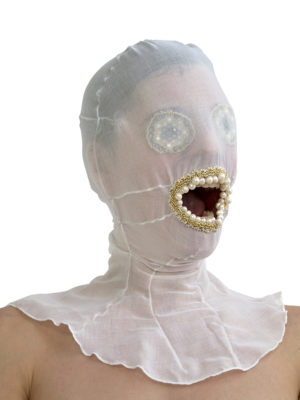
Lauren Kalman is a visual artist based in Detroit, Michigan, United States. She studied Jewellery and Metalsmithing in college and went on to receive an MFA in Art and Technology. Now, her practice is invested in sculpture, jewellery, video, photography and performance and focuses on the ‘uncomfortable connections’³ in visual culture between body image, media, beauty and value. She is able to transform photographs of jewellery and objects into something new, something that becomes more than a photograph itself and closer to another form of (albeit scrutinizing) cultural artefact.
Mariah Tuttle:
Have you always been trans-media? If not, how did your cross-disciplinary breadth evolve?
Lauren Kalman:
Very early in my career I just made physical objects, jewellery and sculpture, but even then I was incorporating electronics, sensors, motors, and so on. I have always been interested in understanding and responding to all of the mediums I work with. I started working with photography and video in graduate school because I was doing temporal, performance-based actions – these necessitated documentation outside of the action. Pretty quickly, the images moved from being documentation of work to the work itself. We are so used to the ubiquitous presence of photography, and now video, that I think it is easy to assume they are passive vehicles – but there are histories, politics, and power dynamics associated with them. I realized that considering them as much as the objects and performance was the responsible thing to do.
Right now, I am working on multiple projects, largely as spin-off to bodies of work I have done in recent years, which allows me to delve more deeply into topics I have touched on in the past. I find a significant amount of overlap in my projects and I am pretty fluid in allowing them to merge together or fracture off.
Jewellery has such a deep history and I feel the need to connect to that history, address it, and reinterpret it in a contemporary context. For example, I reference ornamentation from religious architecture and devotional items, churches, ex votos, funerary objects and so on. I am interested in paying reverence to power or magic through crafted objects. For me, there is something that feels very genuine about that gesture, with its’ combination of awe, fear, love, desperation, and thanks. I make a lot of very simple juxtapositions or combinations to bring these historic references into a contemporary environment through paring them with contemporary objects and bodies, or slightly shifting their function or form.
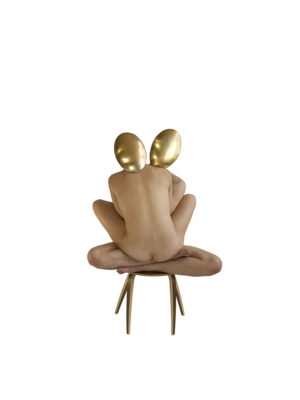
MT: Your images are powerful in their abilities to be both stark yet saturated with associations to ornamentation and objectification. There is a suggestiveness and fantasy that is available in photography that you harness rather well. How do you cultivate the relationship between the objects in your photographs, the images themselves, and the ideas or questions you are trying to convey?
LK: My practice of making art is about analysing, processing, and synthesizing a variety of relatively familiar social constructs and cultural images and objects. Because my work references culture and society, it seems to inherently seek to communicate to an audience. This makes the viewer central to my process.
I have thought of the images and objects, for the most part, as interdependent. The images cannot, of course, exist without the objects, but the images are what give the objects context. The context of being worn demonstrates a bodily discomfort that hopefully has a corporeal resonance with the viewer. The physicality of the object is one of the benefits of working with traditional or familiar materials, like metal. Most of us have a familiar experience with the taste of a metal spoon on our tongue or the discomfort of stainless steel dental tools scraping against our gums.
I think of the images as a medium rather than documentation. In some of my work, I have been trying to mimic ecstatic expressions of martyrs in paintings depicting religious iconography. These historic paintings and sculptures convey narratives, sometimes through singular images without the use of text. With these images, I am trying to find a place that conveys pain, bliss, and transcendence in one expression. But then, the same facial expression is also similar to sexual ecstasy and can tangentially reference visual depictions of orgasm. Through the gesture in the image, I am trying to marry these histories: the spiritual and the corporeal. The objects literally help to force the gesture.
IMAGE AS CULT PERAPHERNALIA
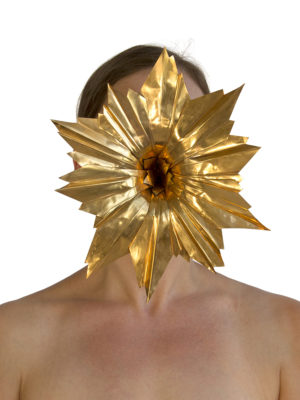
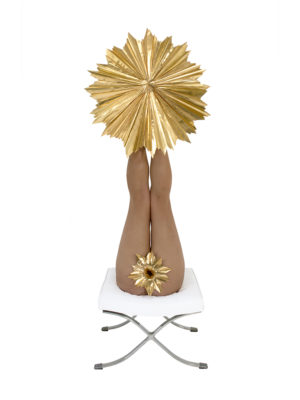
MT: There is the somewhat trendy (yet historical) conversation proposing that most contemporary jewellery exists as images. We know jewellers and their bodies of work via the photographs we have seen (online, in books, Instagram feeds) much more often than by actually seeing the work itself. How do you think jewellers could be tackling the questions, subjects, and possibilities of presenting their jewellery via photography differently? And how would you like to push the power and role of your images further?
LK: I think of the use of photography in ethnographic documentation: the politics and power dynamics present in the act of white, Western, males photographing people of colour (often nude or semi-nude) and then disseminating those images. More directly related to my work, I also think about the use of early photography in the documentation of hysteria in women (an ‘ailment’ that was associated with the feminine). These images of women held in psychiatric hospitals, were restaged for the camera (with long exposure times as it would have been impossible to document most ‘attacks’ in situ). These re-enactments depict the women as aware and posing for the camera. Many are strongly sexualized, with exposed thighs or longing looks. There is a distinct power dynamic at play between the person imaged and the person taking the image (taking being an apt description of the process).
I am personally biased; photography and video are central to my practice. Though no expert, I am interested in photographic history and theory and have some knowledge of the subjects. There are so many connections to fashion photography: the objectification of bodies (particularly women) in images, and the politics and power dynamics that occur when these images of the body, consumer or luxury items, and photography intersect. I would like to see more jewellers take into account the histories that they are reconstructing when they take images of their work.
For many years, my images have been set in a void rather than in a recognizable space. My newest goal is twofold: I have an interest in architecture and its’ impact on bodies, and a desire to move beyond the studio images I have become accustomed to making. So, in my next work I will be exploring existing spaces and thinking about how the context of the space might impact the objects and actions in the images.
JEWELLERY AS EXHIBITION
The context of the space affects the objects as much as the translation into images does. Art Critic Jason Farago recently wrote an article exploring the gallery as the new church 4. In it, he covers subjects from the surge of museum architecture to the placement of famous paintings in private alcoves for easier ‘genuflection,’ and describes how trips to the museum, or gallery, or pop up, have usurped the church as the place to go for experiences of ‘transcendence’ to other realities. Like a relic in a church, the jewellery object in an exhibition plays a role within a larger environmental context. Different contexts create different meanings. The jewellery becomes one part of what can be a powerful, complex, and emotional relationship between artist, space, and viewer – the totality of which conveys the idea.
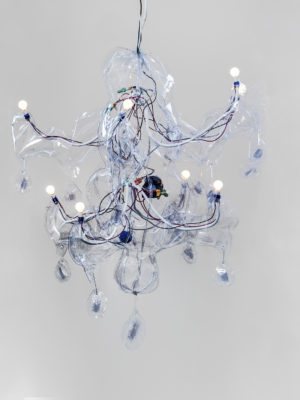
Misha Kahn earned his BFA from Rhode Island School of Design and was a Fulbright Fellow at Bezalel Academy in Israel. His creative work spans from fantastical furniture and shoe design to window displays for New York City’s famed department stores. One of his most recent ventures was the jewellery pop-up Mall Girl with Gallery Loupe.
Mariah Tuttle:
How do you navigate the exploration of cultural gleaning and symbolism in your work while also learning how to explore and make your own new variations?
Misha Kahn:
In a funny way, this is one of a few things that feels like it happens chronologically in the studio. Usually, whenever I’m appropriating an image or riffing on an iconic piece I do it, at first, kind of begrudgingly, with an ‘I’m already bored’ attitude. As soon as that is even partway out of my system, I start ignoring more and more of the logic of the reference and delve deeper into a lucid ‘anything goes’ imagination. I never have any reference material around when I’m working. If I’m trying to recreate a historical mirror in plastic, I’m only going off of my memory of the object. So many things get bungled in this first step that they can become the start of a new variation.

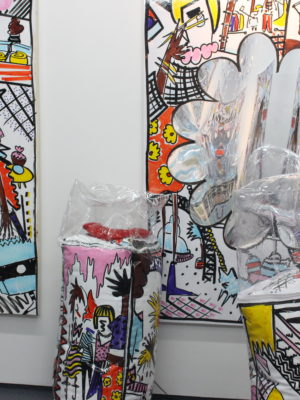
MT: You recently did the exhibition Mall Girl with Gallery Loupe that was a pop-up show in New York City and then travelled to the gallery itself. You created everything in the exhibition equally: the window display, the pedestals, the frames on the wall, the jewellery, even the lighting – all centred on the idea of the quintessential American girl at the shopping mall. It is also a very good example of how you blur the objects on display within the display itself as a larger, interactive object: a place people go to for the entire experience. What is your impetus? What are you trying to create when given the opportunity to have an exhibition?
MK: What I was interested in about the mall is how its’ overstimulation can bring you into a trance. Walking around so much attention grabbing graphics and situations sort of brings you to an ultimate calm. To me, that makes it an escapist place and very complex. It is an eerily, stale cacophony with an element of aspiration to emerge looking better – intertwined with an inevitable sadness. My pieces feel very celebratory and American but they also have to encapsulate some sadness. In hindsight, I would have preferred to try to capture the emotional aspects of the experience without using all the mall imagery.
I always want my environments to feel a bit like a jungle. I like to affect the floors and walls and ceiling so you can really get lost in the experience: situations where people aren’t trying to focus on a single, perfect object and decide what they think about it, but instead they enter an emotional space. When you walk through the woods, you don’t remember specific trees or exposed roots or moss patches, you remember a feeling – like a feeling of troll-i-ness. I want people to remember a feeling, not a specific object. Maybe a moment stands out to them and they can take an object home as a memento.
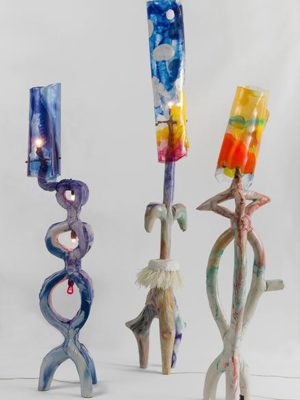
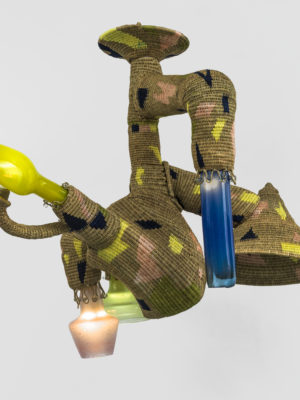
MT: You have previously mentioned that your first internship, doing window displays at (the famed New York City Department Store) Bergdorf’s, had a weird influence on you. It actually seems to make perfect sense: working on creating mini, fantastical environments, layered both with transparency and desire. Have you thought further on ‘that weird influence on you’?
MK: I remember so many little odd moments from that job.
It was my first time observing how an environment could get made. I wasn’t coming up with any of them myself, but just being a little cog in the hot glue process was quite revealing. Those windows are so layered, visually but also conceptually. Is there a better word for that? I hate that vapid word. Every window has some very obvious literary pun – something that feels exclusive but is actually accessible to most passers-by, and then there are tons of tiny moments hiding for the more serious gazer. I love that. I always run my own projects through a similar filter, like leaving clues that are easy at first and then get more exciting and difficult.
There was also a moment I remember when I was painting this branch for one of the displays, and it looked so, so shitty. I asked if we could make it glossy or do something else to it, and the director quickly said ‘the window adds the gloss’. Sometimes it isn’t about making a perfect object but about creating a scene so the pieces are what they’re supposed to be. That feels like the difference. To me the fine line in my work is to make sure I’m not removing the part that makes it human: the sadness. It can be really jovial but there has to be some balance. I’m not making a wonderland; I’m creating something that feels like a surreal and parallel simulacrum to our lives.
MALLS, CHURCHES, SUPPLY STORES and JEWELLERY EXHIBITIONS
MT: These environments become spiritual – the gallery blurs with the mall blurs with the church blurs with fantasy and becomes supernatural – beyond natural. You often mention your desire for design to move away from rigidity and embrace a looser logic. How can people tap into their own looser logic? You do it naturally and people respond to it – and in many ways, I think your environments are created as invitations to let go of rigidity.
MK: I try to work in a studio setting where I do things in a way that feels truly intuitive and open throughout the entire process. But it’s hard when you stop to realize that every single product we buy at the store is a result of a material culture that craves regularity and consistency.
If you go to the art supply store, the supplies are so standard that part of (your capacity for) creativity has already been lost as soon as you enter the door. Buying a pre-stretched, rectangular canvas and putting paint on it is only letting you (potentially) get loose on the final step: the paint-adding step. But really, you can start by making any shape you want or weaving any goofball canvas…
Or, for example, it would feel much more challenging to build a house that’s not a square with 16″ on centre, 2×4 studs – because those are the stock items our system produces. If we decided to build a house that just left every line at any 8-foot angle, we could instead make a lot of interesting shapes while still using these readily available materials. I don’t think that building a more exciting space is illogical, or simply a reaction to Home Depot, its just being open to possibility. It seems to me that we can completely ignore these readily made prompts (and materials) and not be antagonized by them.
However, I also run things through a filter of ‘Is this a prop?’ Did I go out of my way to make it zany and irreverent, lumpy with a wavy edge, just for the sake of it not being square? I don’t ever want to do that, and sometimes it feels like that happens. That’s the boundary for me. If something is so easy to make as a square and I’m gluing and hacking all this shit to it just because I hate how easy our culture makes making a square – then I’m not having a very nuanced relationship with the present.
Creating that very real relationship with the present seems like a much more exciting challenge than just being content with an aesthetic of looseness. I think people can tap into their own looser logic in a lot of ways. It is super important to think about creativity from the very, very beginning. To me, truly loose logic means feeling free to really start at Point A and go wild.
Basically, being a (good) artist or designer requires going down your own unmarked trail into the depths of a messy, dreadfully un-scenic, brush forest and hoping to stumble upon something magnificent, so in that way there is always a sense of blind faith and intuition. Many of the basic associations of the ‘artist as shaman’ pitch is this whole notion of being in a sort of whacked out hippie trance. But to me, it should focus more on allowing yourself to live in a world of your own logic, your own intelligence and thought — if you start with that as your foundation, any inspiration can get run through your immediate filter and emerge as something other-ly and special.
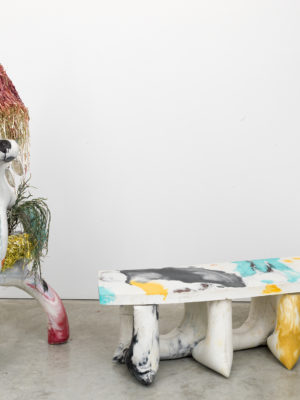
1.Walker, Lisa. ‘Profile’. http://www.lisawalker.de
2.Quick, Kerianne. ‘Put a cord on it’. Art Jewelry Forum. https://www.artjewelryforum.org
3.Kalman, Lauren. ‘About’. http://www.laurenkalman.com/art/About.html
4.Farago, Jason. ‘Why museums are the new churches’. BBC. http://www.bbc.com/culture/story/20150716-why-museums-are-the-new-churches
This article was first published in #4 Supernatural Issue of Current Obsession Magazine, 2015. You can order the issue here
